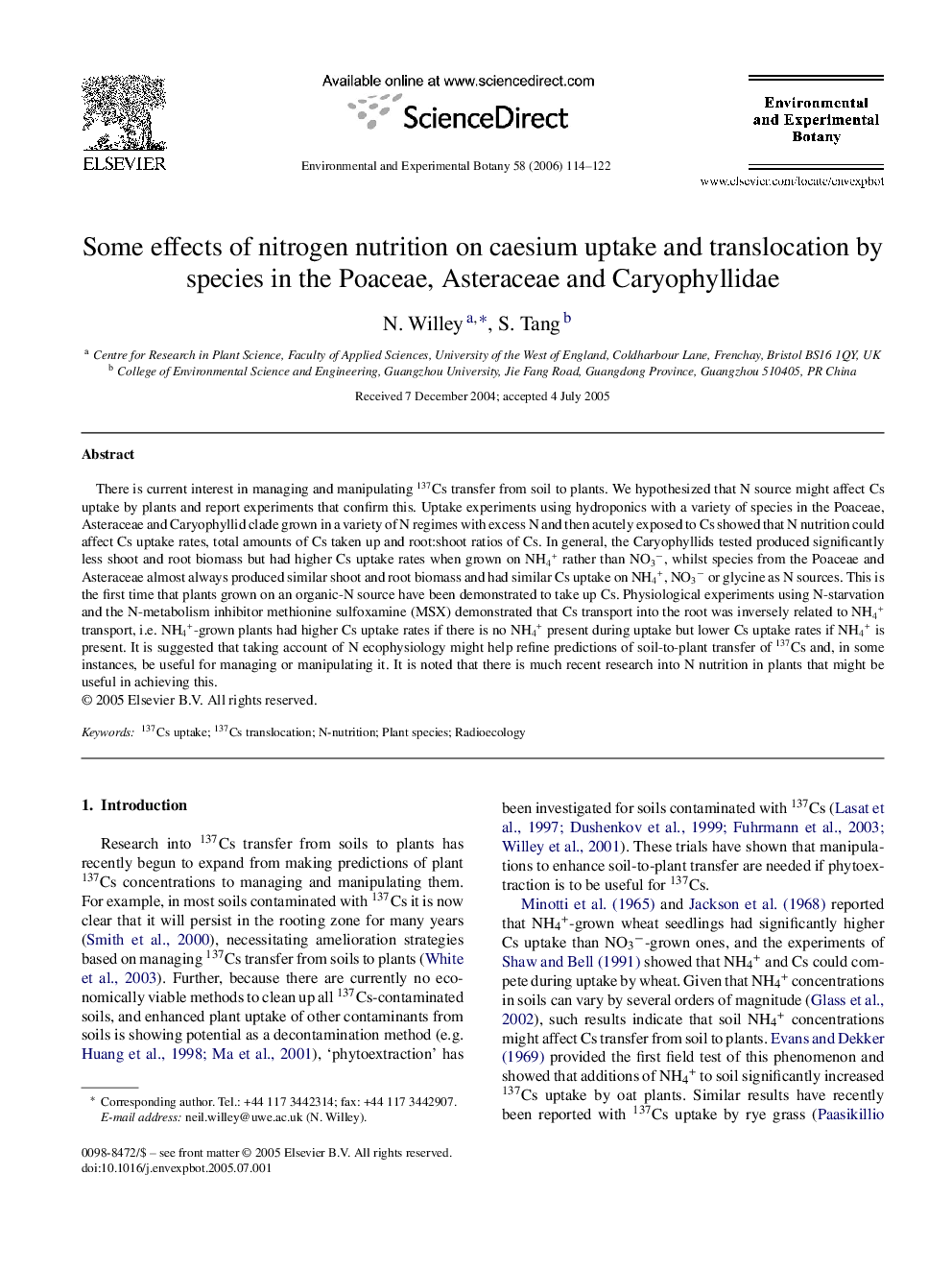| Article ID | Journal | Published Year | Pages | File Type |
|---|---|---|---|---|
| 4555650 | Environmental and Experimental Botany | 2006 | 9 Pages |
There is current interest in managing and manipulating 137Cs transfer from soil to plants. We hypothesized that N source might affect Cs uptake by plants and report experiments that confirm this. Uptake experiments using hydroponics with a variety of species in the Poaceae, Asteraceae and Caryophyllid clade grown in a variety of N regimes with excess N and then acutely exposed to Cs showed that N nutrition could affect Cs uptake rates, total amounts of Cs taken up and root:shoot ratios of Cs. In general, the Caryophyllids tested produced significantly less shoot and root biomass but had higher Cs uptake rates when grown on NH4+ rather than NO3−, whilst species from the Poaceae and Asteraceae almost always produced similar shoot and root biomass and had similar Cs uptake on NH4+, NO3− or glycine as N sources. This is the first time that plants grown on an organic-N source have been demonstrated to take up Cs. Physiological experiments using N-starvation and the N-metabolism inhibitor methionine sulfoxamine (MSX) demonstrated that Cs transport into the root was inversely related to NH4+ transport, i.e. NH4+-grown plants had higher Cs uptake rates if there is no NH4+ present during uptake but lower Cs uptake rates if NH4+ is present. It is suggested that taking account of N ecophysiology might help refine predictions of soil-to-plant transfer of 137Cs and, in some instances, be useful for managing or manipulating it. It is noted that there is much recent research into N nutrition in plants that might be useful in achieving this.
